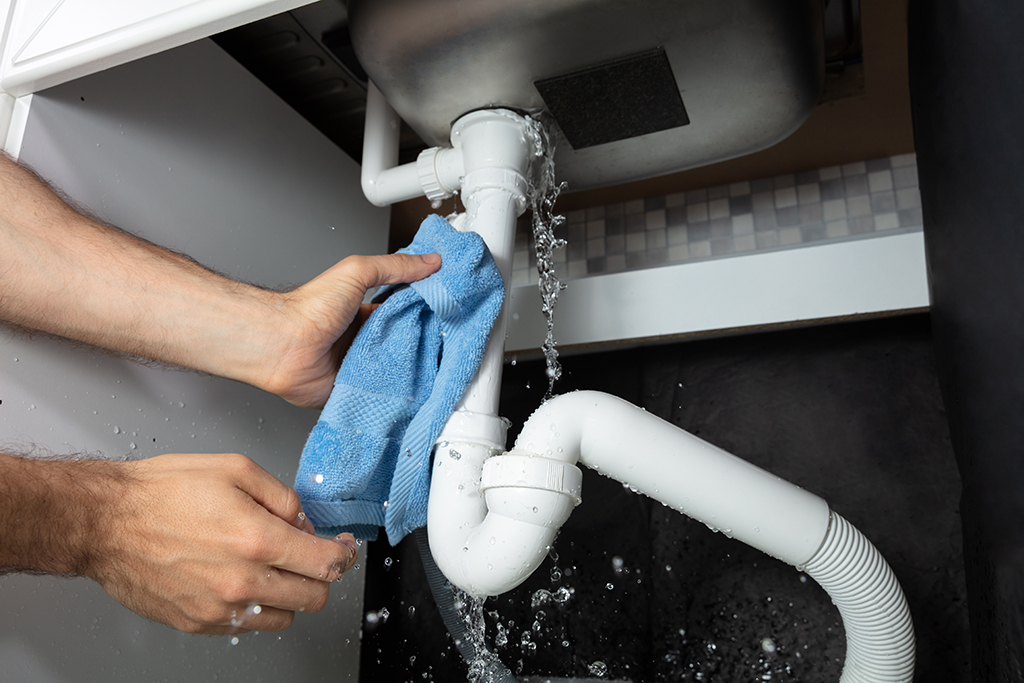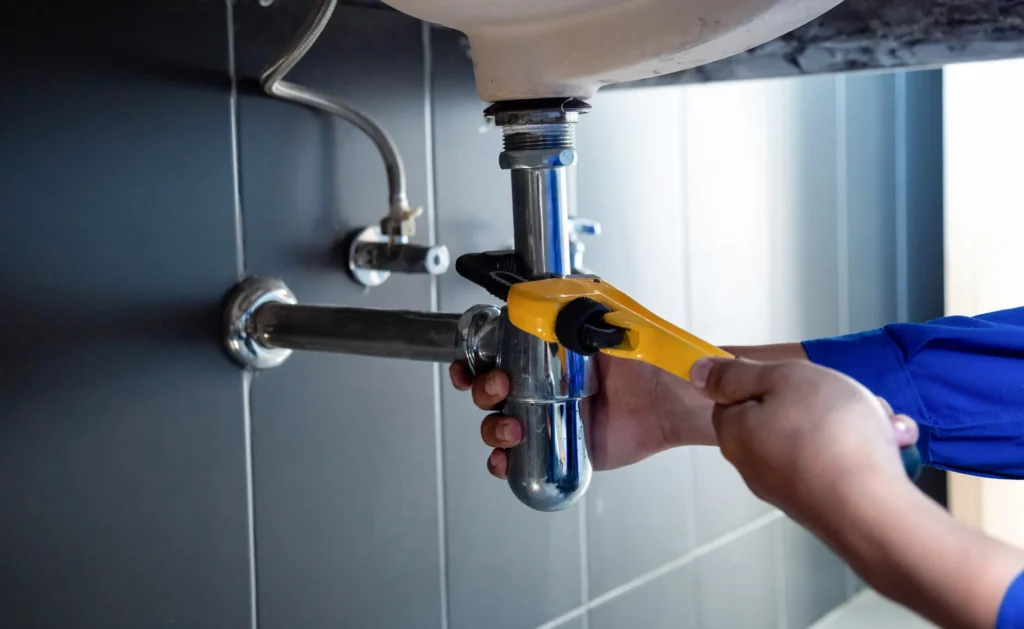Recognizing Leaky Faucets: When to Call Pipes Professionals for Assistance
Leaking faucets, a common household nuisance, can stealthily appear minor, yet their implications may expand past simple nuisance. While some leaks might be resolved with standard do it yourself repair work, they can typically mask much more significant concerns prowling within your plumbing system. Recognizing when a straightforward solution wants is essential in avoiding pricey repercussions. The choice to engage specialist plumbing professionals hinges on understanding the refined indicators that identify between potential calamities and minor hassles. Just how does one determine these critical indications, and what are the underlying risks of inactiveness? The answers may redefine just how you approach pipes maintenance.
Usual Sources Of Leaky Faucets
A leaky tap is an usual household issue that can develop from numerous underlying causes. One of the most widespread reasons is the degeneration of inner components, such as seals, washing machines, or o-rings. These components can break with time because of routine use and water stress, resulting in drips. One more regular reason is the build-up of natural resource, especially in areas with hard water. These deposits can build up and cause parts of the faucet to malfunction or obstruct the flow of water, resulting in leaks.
Corrosion is another factor that can contribute to a dripping tap. Gradually, the interior parts of a faucet, particularly those constructed from steel, might rust due to exposure to water and air. This can weaken the framework and lead to leaks. Additionally, inappropriate installment or poor-quality products can likewise be significant factors. If a tap has not been installed correctly, it might not develop a best seal, allowing water to escape.
Finally, modifications in water pressure can occasionally motivate leaks. Abrupt rises in pressure can emphasize faucet parts, triggering them to fail too soon. Comprehending these causes can aid home owners address problems promptly.

Do It Yourself Repairs for Minor Leaks
Tackling small leaks in taps can be a simple task with the right devices and understanding. The initial step is to identify the resource of the leakage, which typically stems from worn-out washing machines, seals, or O-rings. Begin by turning off the water to avoid more water loss. When the water is off, get rid of the faucet take care of using a screwdriver or an Allen wrench. This will reveal the internal parts such as the washer or cartridge.
Evaluate the washer or O-ring for visible indications of wear, such as splits or flattening. Replace them with new components that match the faucet design if damaged. It is advisable to bring the old components to an equipment shop to ensure appropriate sizing. Reconstruct the tap meticulously, making certain all components are securely tightened to stop future leaks.
For compression faucets, reseating the valve seat may be required. Use a reseating tool to smooth out any kind of harsh locations that might add to leaks. Always test the faucet after reassembly to validate the leakage has actually been remedied. Routine maintenance and timely substitutes can expand the life of the tap and stop minor issues from escalating.
Signs You Required a Plumbing Professional

Uncommon sounds, such as banging or clanking when the tap is switched on, suggest issues like water hammer or loose parts within the pipes lines. These conditions, if left unattended, might bring about more severe issues. Stained water arising from the faucet is another indicator of possible pipe rust or contamination, demanding prompt professional attention to guarantee water security.
Additionally, if you see any signs of mold and mildew additional reading or mildew around the tap area, it may result from a leak that has actually gone unnoticed. A plumbing technician can detect and resolve the root cause efficiently. Lastly, if the faucet is part of a more complex system involving multiple pipes links, specialist proficiency is essential to avoid inadvertent problems throughout repair services.
Potential Threats of Neglecting Leaks
How usually do property owners take too lightly the prospective effects of disregarding a dripping faucet? According to the U.S. Environmental Defense Agency, a leaking tap dripping at a rate of one drip per secondly can waste over 3,000 gallons of water yearly.
Water waste apart, the more perilous concerns arise from extended direct exposure to dampness. Persistent leaks can cause architectural damage as water leaks right into kitchen cabinetry, flooring, and walls, potentially endangering the honesty of these materials. This moisture can likewise visit here promote the development of mold and mildew and mildew, positioning health and wellness dangers to owners as a result look at these guys of allergens and irritants that affect indoor air high quality.
In addition, the continual trickling can increase the damage on pipes fixtures, resulting in much more comprehensive repair work or replacements. Ignoring these leaks can cause worsened expenses in time, transforming a simple fix right into an expensive remodelling. Proactive upkeep and prompt intervention are vital to reduce these risks and maintain home stability.
Choosing the Right Pipes Specialist
Attending to the issues triggered by dripping faucets frequently calls for the experience of a proficient plumbing professional. Picking the best specialist is vital to guarantee the problem is solved effectively and prevents additional problems. Beginning by seeking referrals from trusted resources such as pals, family, or on the internet reviews. These endorsements can offer insight into the dependability and quality of service offered by various plumbers.
Validate the credentials of any type of prospective plumber; they ought to be certified, guaranteed, and adhered. This not only guarantees their certification however additionally gives protection against any type of prospective obligations throughout the fixing procedure - emergency plumbers near me. Experience is another important element; a plumbing technician with a lengthy background in the sector might be much better outfitted to take care of complex issues with efficacy
Additionally, evaluate the plumbing's communication skills and professionalism and reliability. A proficient plumbing technician must be able to clearly discuss the problem, suggest appropriate remedies, and give a clear quote of expenses involved. This transparency aids in staying clear of unforeseen costs and guarantees a smooth service experience.
Last but not least, take into consideration the accessibility of emergency services. emergency plumbers near me. Dripping taps can in some cases escalate all of a sudden, calling for instant attention. Picking a specialist who offers 24/7 solutions makes sure peace of mind and prompt resolution
Verdict
Dealing with dripping faucets quickly is essential for maintaining plumbing effectiveness and preventing further issues. While small leaks can typically be taken care of with Do it yourself solutions, consistent concerns such as reduced water pressure, unusual noises, or tarnished water demand specialist treatment.
These deposits can build up and trigger components of the tap to breakdown or block the circulation of water, resulting in leaks.
Over time, the internal parts of a faucet, especially those made of steel, might wear away due to direct exposure to water and air. If a tap has not been installed properly, it may not develop a best seal, permitting water to get away.
Uncommon audios, such as banging or clanking when the faucet is turned on, suggest issues like water hammer or loose components within the plumbing lines. According to the U.S. Environmental Protection Agency, a leaking faucet leaking at a rate of one drip per second can waste over 3,000 gallons of water yearly.